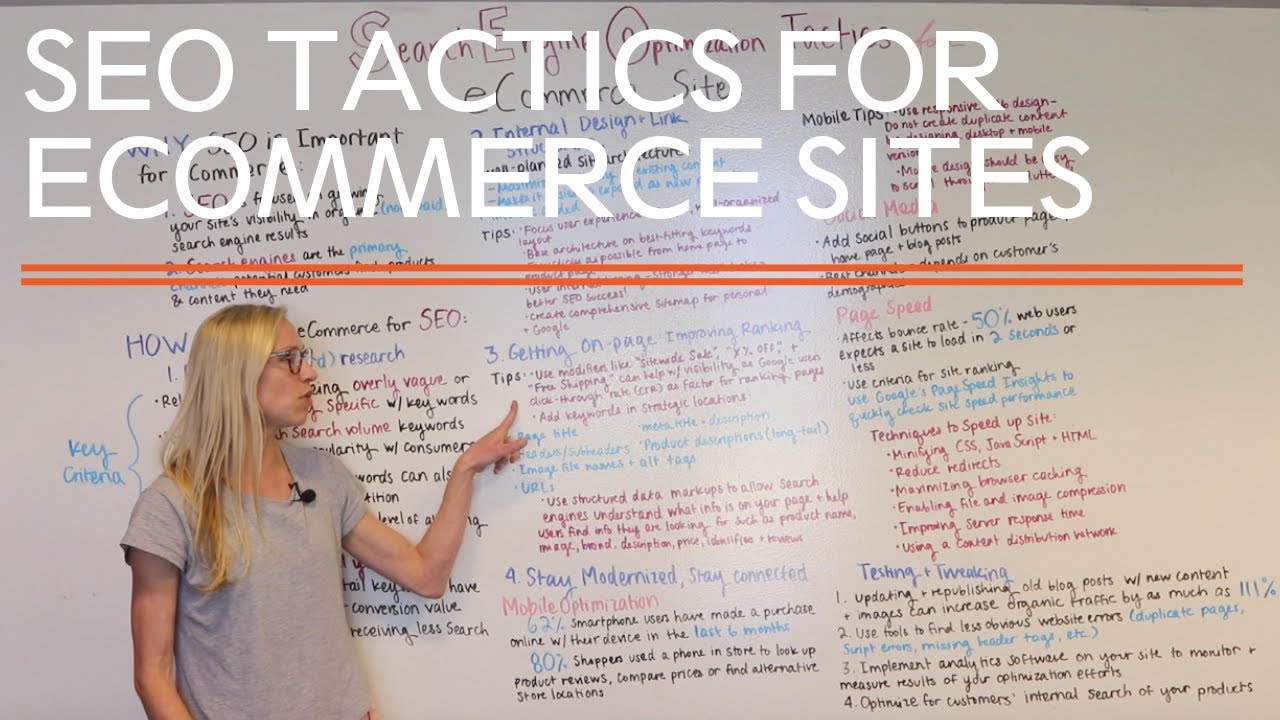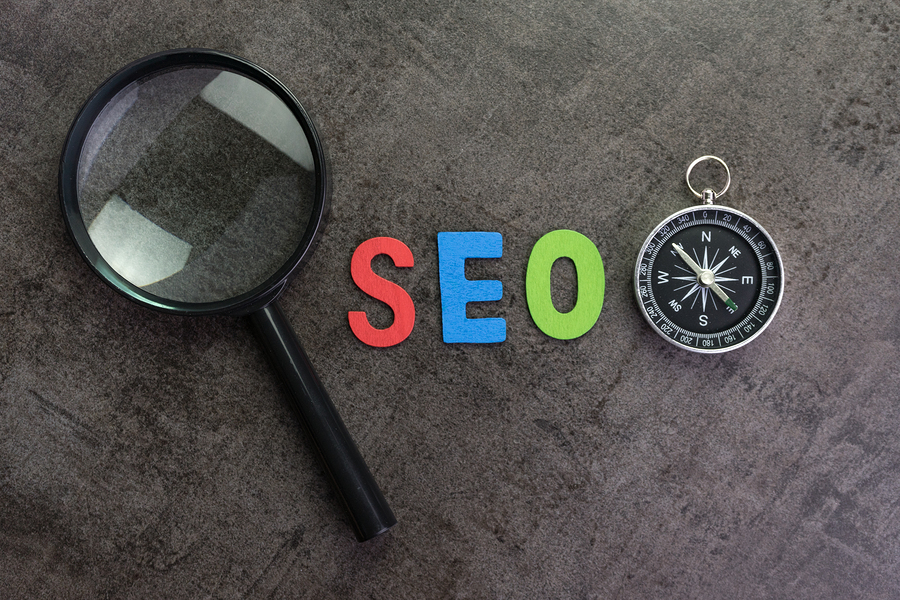There are a few key things you can do to optimize your ecommerce website for search engines. First, make sure your site is well- structured and easy to navigate. This will help search engine crawlers index your pages more effectively.
Second, create unique and keyword-rich product descriptions. This will give your products a better chance of ranking high in relevant search results. Finally, use internal linking to help boost the authority of your individual product pages.
By following these tips, you can improve your ecommerce website’s SEO and attract more organic traffic from potential customers.
On page SEO for ecommerce websites can be a bit tricky. There are so many different things to optimize for, from title tags to meta descriptions to product descriptions and more. But don’t worry, we’ve got you covered.
Here are some tips for on page SEO for ecommerce websites:
1. Title Tags: Make sure your title tags are unique and descriptive. Include keywords that accurately describe your products or services.
2. Meta Descriptions: Write compelling meta descriptions that will make people want to click through to your website. Again, include relevant keywords but also make sure the description is interesting and engaging.
3. Product Descriptions: Optimize your product descriptions for both search engines and potential customers.
Use keyword-rich titles and descriptions that accurately describe what you’re selling. Also, don’t forget to include high-quality images!
4. URLs: Use keyword-rich URLs that accurately reflect the content on your pages.
This will help both search engines and users understand what your pages are about, making it more likely they’ll visit them.
Seo for Ecommerce Website | On Page Seo | Ecommerce seo
How to Do on Page Seo for Ecommerce Website?
There is no one-size-fits-all answer to this question, as the best way to do on page SEO for an ecommerce website will vary depending on the specific website and its products. However, there are some general tips that can be followed in order to improve on page SEO for an ecommerce website.
Some of the most important things to keep in mind when doing on page SEO for an ecommerce website include: optimizing title tags and meta descriptions, using high-quality images and videos, optimizing product pages for relevant keywords, creating unique and compelling content, and ensuring that the website is mobile-friendly.
Title tags and meta descriptions are two of the most important elements of on page SEO. Title tags should be unique and descriptive, while meta descriptions should provide a brief overview of what the page is about. Both title tags and meta descriptions should include relevant keywords for thepage.
Images and videos can also help to improve on page SEO. Images should be high quality and relevant to the products being sold, while videos should be informative and well-produced. Both images and videos should beoptimized with keyword-rich titles and descriptions.
Product pages are another important element of on page SEO for ecommerce websites. Product pages should be optimized for relevant keywords, including both short tailand long tail keywords. The product description should be clearand concise, while also providing enough detail to give potential customers a good idea of what they’re buying.
Finally, it’s important to ensure that your ecommerce website is mobile friendly. Moreand more people are shopping online using their mobile devices, so it’s crucialthat your website is designed for mobile users.
What are the 3 Most Important on Page Seo Factors?
There are many factors that contribute to a website’s ranking in search engine results pages (SERPs). However, some factors carry more weight than others. Here are three of the most important on-page SEO factors:
1. Title Tags
Title tags are one of the most important on-page SEO elements. They appear in the browser tab and at the top of SERPs, so it’s important to make them descriptive and keyword rich.
Keep your title tags under 60 characters long, as anything beyond that will be cut off in SERPs.
2. Meta Descriptions
Meta descriptions don’t directly affect your website’s ranking, but they are still an important on-page SEO element.
A well written meta description can help entice users to click through to your website from SERPS. Keep your meta descriptions under 160 characters long, as anything beyond that will be cut off in SERPs.
3. Header Tags
Header tags help break up your content into digestible sections for both users and search engines. H1 tags should be used for your main headlines, while H2 tags can be used for subheadings or secondary headlines within your article. Using header tags can help improve both the user experience and accessibility of your website.
What are the Top 5 on Page Seo Factors?
Search Engine Optimization (SEO) is the practice of improving the ranking of a website on search engines. The higher the ranking, the more likely people are to find the website. There are many factors that go into SEO, but some are more important than others.
Here are the top five on-page SEO factors:
1. Title Tags
The title tag is one of the most important elements of an SEO-friendly page.
It tells search engines what your page is about, and it appears at the top of your browser window when someone visits your site. Make sure your title tags are descriptive and include relevant keywords for your page.
2. Meta Descriptions
Meta descriptions appear under your title tag in search engine results pages (SERPs). They give visitors a brief overview of what they can expect to find on your page. Like title tags, meta descriptions should be keyword-rich and informative.
3. Headings and Subheadings
Headings and subheadings help break up content into manageable chunks for readers. They also give search engines an idea of what each section of your page is about.
Use headings and subheadings judiciously, and make sure they’re formatted with proper HTML tags (h1 for headings, h2 for subheadings, etc.).
How Does Seo Work in E-Commerce?
In order for ecommerce businesses to be successful, they must have a solid understanding of how SEO works and how it can be used to their advantage. There are a number of different factors that go into ranking on search engines, and ecommerce businesses need to make sure they are taking all the necessary steps to ensure their website is visible to potential customers.
One of the most important things that ecommerce businesses need to do is create keyword-rich content.
In order for your website to show up in search results, people need to be searching for terms that are relevant to your products or services. By including these keywords in your website content, you can help improve your chances of appearing in search results. Additionally, you should make sure your website is easy to navigate and contains quality product descriptions and images.
These elements will not only help improve your SEO, but they will also help convert visitors into paying customers.
Do Ecommerce Sites Need Seo?
The short answer is yes, ecommerce sites need SEO. By optimizing your site for search engines, you can improve your visibility in search results, which can ultimately lead to increased traffic and sales.
There are a number of things you can do to optimize your ecommerce site for search engines, including:
1. Conduct keyword research to identify the keywords that potential customers are using to find products like yours online.
2. Use those keywords throughout your site, including in your product descriptions, title tags, and meta descriptions.
3. Optimize your website’s architecture and navigation to make it easy for search engines to crawl and index your content.
4. Create high-quality content that helps potential customers learn more about the products you sell and why they should buy from you.
What are the 3 Types of Seo?
There are three types of SEO: on-page, off-page, and technical.
On-page SEO is the process of optimizing a website for Google’s search engine algorithms. It involves factors like page titles, headings, metatags, and keyword density.
Off-page SEO is the process of optimizing a website to rank higher in Google’s search engine results pages (SERPs). It involves activities like link building and social media engagement.
Technical SEO is the process of improving the crawlability and indexation of a website.
It involves factors like site architecture, sitemaps, robots.txt file, and redirects.
What are the Seo Techniques We Should Apply to an Ecommerce Store?
There are many different SEO techniques that can be applied to an ecommerce store in order to improve its ranking in search engine results pages (SERPs). Some common techniques include optimizing title tags and meta descriptions, using keyword-rich product descriptions and categories, creating informative blog content, and building backlinks from high-quality websites. By taking a holistic approach and applying various SEO tactics, you can give your ecommerce store the best chance of ranking highly in SERPs and driving organic traffic.
What are the 7 Types of Seo?
SEO, or “search engine optimization”, is the process of improving the visibility and ranking of a website or web page in search engine results pages (SERPs). It is a digital marketing strategy that helps to improve the organic search visibility of a website in order to attract more visitors from search engines.
There are seven types of SEO:
1. Search Engine Optimization for Rankings
2. Search Engine Optimization for Clicks
3. Search Engine Optimization for Conversions
4. Technical SEO
5. On-Page SEO
6. Off-Page SEO

Credit: www.campaigncreators.com
Seo for Ecommerce Websites
SEO for Ecommerce Websites
The ecommerce landscape is constantly changing, and that means your SEO strategy needs to be constantly evolving as well. If you’re not keeping up with the latest trends, you risk being left behind by your competition.
That’s why we’ve put together this guide to help you make sure your ecommerce website is optimized for search engines. We’ll cover the most important aspects of SEO for ecommerce websites, including:
– Keyword research
– On-page optimization
– Link building
– Social media marketing
By following the tips in this guide, you can give your ecommerce website the boost it needs to attract more traffic and convert more sales. Let’s get started!
E-Commerce Seo Checklist
As the world of online commerce continues to grow, it’s more important than ever for businesses to have a solid eCommerce SEO strategy. After all, search engine optimization is what helps you get found by potential customers online.
But with so many different aspects to consider, it can be difficult to know where to start.
That’s why we’ve put together this handy eCommerce SEO checklist. By following these best practices, you can help ensure that your online store is visible to the people who are searching for your products or services.
1. Do Your Keyword Research
One of the most important things you can do for your eCommerce SEO is to choose the right keywords. These are the words and phrases that potential customers will use when they’re searching for products or services like yours. So it’s important to take some time to research which keywords are most relevant to your business and make sure you’re using them throughout your website.
2. Optimize Your Product Pages
Once you’ve decided on the right keywords, it’s time to start optimizing your product pages. This means including those keywords in key places like the page title, product descriptions, and tags.
You should also make sure that each product page has unique content that helps it stand out from other similar pages on the web. The goal is to make it as easy as possible for search engines and potential customers alike to find and understand what your product is and why they should buy it from you.
E-Commerce Seo Services
There are many SEO service providers that offer eCommerce SEO services. However, not all of them are created equal. Here are a few things to look for when choosing an eCommerce SEO service provider:
1. Experience: Make sure the company you choose has experience optimizing eCommerce sites. Ask for references and case studies to see proof of their success.
2. Services Offered: Find out what type of services the company offers.
Do they just offer on-page optimization? Or do they also offer link building and other off-page SEO services? The more comprehensive the package, the better.
3. Pricing: Be sure to get a pricing quote in writing before committing to anything. Some companies charge by the hour, while others charge a flat rate per project. Compare pricing between different companies to find the best deal.
4. Reporting: Ask about reporting procedures before signing up for any eCommerce SEO services. You should receive detailed monthly reports showing your progress and results achieved.
Conclusion
On Page Seo for Ecommerce Website
An eCommerce website is a website that sells products or services online. In order to rank well in search engine results pages (SERPs), eCommerce websites need to optimise their on page SEO.
This includes optimising title tags, meta descriptions, product descriptions, images and more.
When it comes to on page SEO for eCommerce websites, the most important thing is to ensure that all of your product pages are optimised correctly. This means including the relevant keywords in the title tag, meta description and product description.
It’s also important to make sure that your images are optimised with the relevant keywords so that they appear in image search results.
Overall, on page SEO for eCommerce websites is essential if you want to rank well in SERPs and drive traffic to your website. By optimising your website correctly, you can ensure that your products are seen by potential customers and increase your chances of making a sale.



